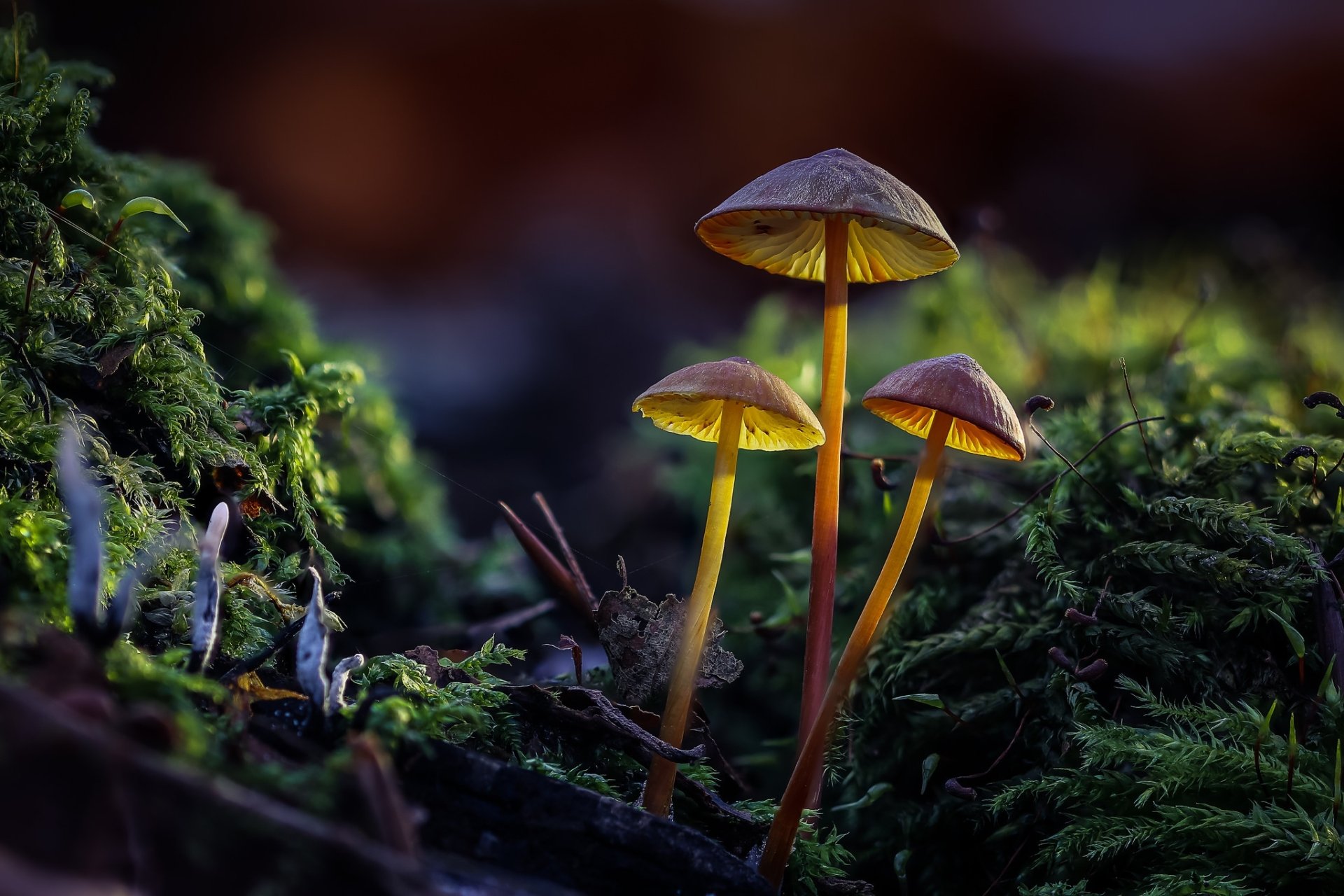
Have you ever wondered about the enchanting world of mushroom growing? Delving into this fascinating endeavor can lead you on a journey of discovery, as you unlock the secrets of nurturing these enigmatic fungi. From humble button mushrooms to exotic shiitakes, oyster, or lion’s mane varieties, each species holds its own allure and challenges. In this article, we will explore the art and science of mushroom cultivation, providing you with valuable insights and tips to embark on your own successful mushroom-growing adventure.
Mushroom growing has captivated the imaginations of people throughout history. With their unique and delicate appearance, mushrooms have long been regarded as mysterious and magical, hailed for their distinct flavors and medicinal properties. Whether you’re a culinary enthusiast yearning to incorporate fresh, homegrown mushrooms into your recipes or an aspiring hobbyist seeking to unlock the secrets of nature’s hidden kingdom, this article will serve as a comprehensive guide to help you navigate the world of mushroom cultivation.
By understanding the fundamental principles behind successful mushroom growing, you can create an environment that fosters optimal growth and abundant harvests. We will delve into the different stages of the mushroom life cycle, discussing the importance of substrate selection, sterilization techniques, and appropriate environmental conditions. From preparing your growing medium to the careful management of temperature, humidity, and light, we will equip you with the knowledge and tools necessary to create the perfect environment for your mushroom crop to flourish.
Embark with us on this incredible journey as we demystify the intricacies of mushroom growing. Together, we will unlock the secrets of successful cultivation, enabling you to channel your inner "mushroom whisperer" and become the master of your own fungi-filled domain. So, roll up your sleeves, get ready to dig into this enthralling hobby, and let’s get started on this remarkable exploration of mushroom growing!
Choosing the Right Mushroom Varieties
When it comes to mushroom growing, choosing the right mushroom varieties is crucial for a successful harvest. Different mushroom species have different growth requirements and preferences, so it’s important to select the ones that are best suited to your growing conditions.
-
Consider Your Environment
The first step in choosing the right mushroom varieties is to evaluate your growing environment. Factors such as temperature, humidity, and light availability play a significant role in determining which mushrooms will thrive. Some varieties, like oyster mushrooms, prefer cooler temperatures, while others, such as shiitake mushrooms, require a warmer climate. Understanding your environment will help you narrow down your options and select species that will flourish in your specific conditions. -
Identify Your Goals
Next, identify your goals for mushroom growing. Are you looking to cultivate mushrooms for culinary purposes, medicinal use, or simply for personal enjoyment? Different mushroom varieties offer distinct flavors, textures, and medicinal properties. For example, morel mushrooms are highly prized for their earthy flavor and are often used in gourmet dishes, while reishi mushrooms are known for their immune-boosting properties. Determining your goals will help guide your selection process and enable you to choose the most suitable varieties. -
Consider Your Level of Experience
Lastly, consider your level of experience in mushroom growing. Some mushroom species are more forgiving and easier to cultivate, making them ideal for beginners. For example, white button mushrooms are relatively easy to grow and have a quick cultivation cycle. On the other hand, certain species like truffles require more precise growing conditions and are better suited for experienced growers. Assessing your experience level will help you avoid unnecessary challenges and frustration, allowing you to focus on varieties that align with your skills.
By carefully considering your environment, goals, and experience level, you can make informed decisions when selecting mushroom varieties. Remember to research each species thoroughly and learn about their specific requirements to ensure a successful and rewarding mushroom growing journey.
Creating the Ideal Growing Environment
To ensure successful mushroom growing, it is crucial to create the ideal environment for these remarkable fungi. Providing the right conditions will greatly enhance their growth and yield. Here are three key factors to consider in creating the ideal growing environment:
-
Temperature: Maintaining a consistent and suitable temperature is essential for mushroom growth. Different mushroom species have specific temperature preferences, so it’s important to research the optimal temperature range for the variety you are cultivating. Generally, mushrooms thrive in temperatures between 55 and 65 degrees Fahrenheit (13-18 degrees Celsius). It’s crucial to monitor and regulate the temperature to maximize the productivity of your mushroom crop.
-
Humidity: Mushrooms require a high humidity level to develop and mature successfully. The optimal humidity range for mushroom growing typically falls between 80% and 90%. To maintain the desired humidity, you can use various methods such as misting the growing area with water, placing trays of water nearby, or employing humidifiers in larger setups. Careful monitoring and adjustment of humidity levels will contribute to healthy mushroom growth.
-
Lighting: Unlike plants, mushrooms do not rely on photosynthesis to grow. In fact, mushrooms prefer low light conditions. Exposure to direct sunlight can be harmful to their growth and may cause drying or overheating. Instead, provide indirect or diffused light, such as ambient room lighting or low-intensity artificial light sources. Optimal lighting conditions will help the mushrooms develop their distinct shape, color, and texture.
By understanding and carefully managing these three factors – temperature, humidity, and lighting – you can create an ideal growing environment that promotes healthy and abundant mushroom cultivation. To further enhance your chances of success, it’s also crucial to select the appropriate growing medium, ensure proper air circulation, and maintain cleanliness to avoid contamination.
Nurturing Mushrooms for Optimal Growth
When it comes to mushroom growing, providing the right conditions is crucial for optimal growth. By focusing on three key aspects – substrate, temperature, and humidity – you can create a nurturing environment that allows your mushrooms to thrive.
First and foremost, the substrate plays a vital role in mushroom cultivation. The substrate refers to the medium in which the mushrooms grow, such as compost or sawdust. It is essential to choose a substrate that is nutrient-rich and suitable for the specific type of mushroom you are growing. This will provide the necessary food source for the mushrooms and contribute to their healthy development.
Maintaining the ideal temperature is another crucial factor for successful mushroom growth. Different types of mushrooms have different temperature requirements, so it is important to research and understand the specific needs of the variety you are cultivating. Generally, mushrooms thrive in a temperature range of 55-75°F (13-24°C). Ensuring a consistent temperature within this range can promote faster growth and prevent issues such as slow development or contamination.
Lastly, maintaining proper humidity levels is essential for mushroom cultivation. Mushrooms require a humid environment to grow successfully, but excessive moisture can lead to problems such as mold or bacterial contamination. It is crucial to strike a balance and provide enough moisture to keep the mushrooms hydrated while avoiding excess wetness. This can be achieved by misting the growing area regularly or using a humidity controller to maintain the desired level.
By understanding and addressing the importance of substrate, temperature, and humidity in mushroom growing, you can create an environment that fosters optimal growth. Careful attention to these factors will give you the best chances of a successful harvest.






